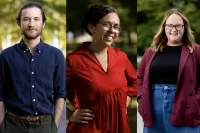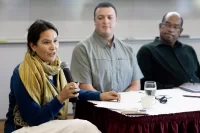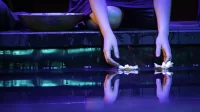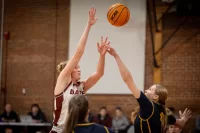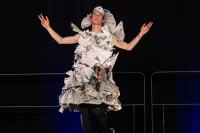
Of the 504 seniors who crossed the Coram Library stage at Commencement to be congratulated by President Garry W. Jenkins, four had majors not offered by traditional departments like history, biology, or English.
Instead, these seniors designed their own majors from the ground up, creating distinct academic paths known at Bates by the umbrella term “interdisciplinary studies.”
Maria McEvoy ’25, for example, merged her interests in the outdoors, the environment, and history to create her IS major in indigenous and prehistoric environmental studies.
She started out generally interested in environmental studies, then was drawn into exploring historical elements of the subject, particularly by learning from indigenous and marginalized voices.
“I was interested in the history side of it,” McEvoy says. “If our relationship with the environment is super fraught right now, what did people’s relationships to the environment look like historically? Have people always had a fraught relationship with the environment?”
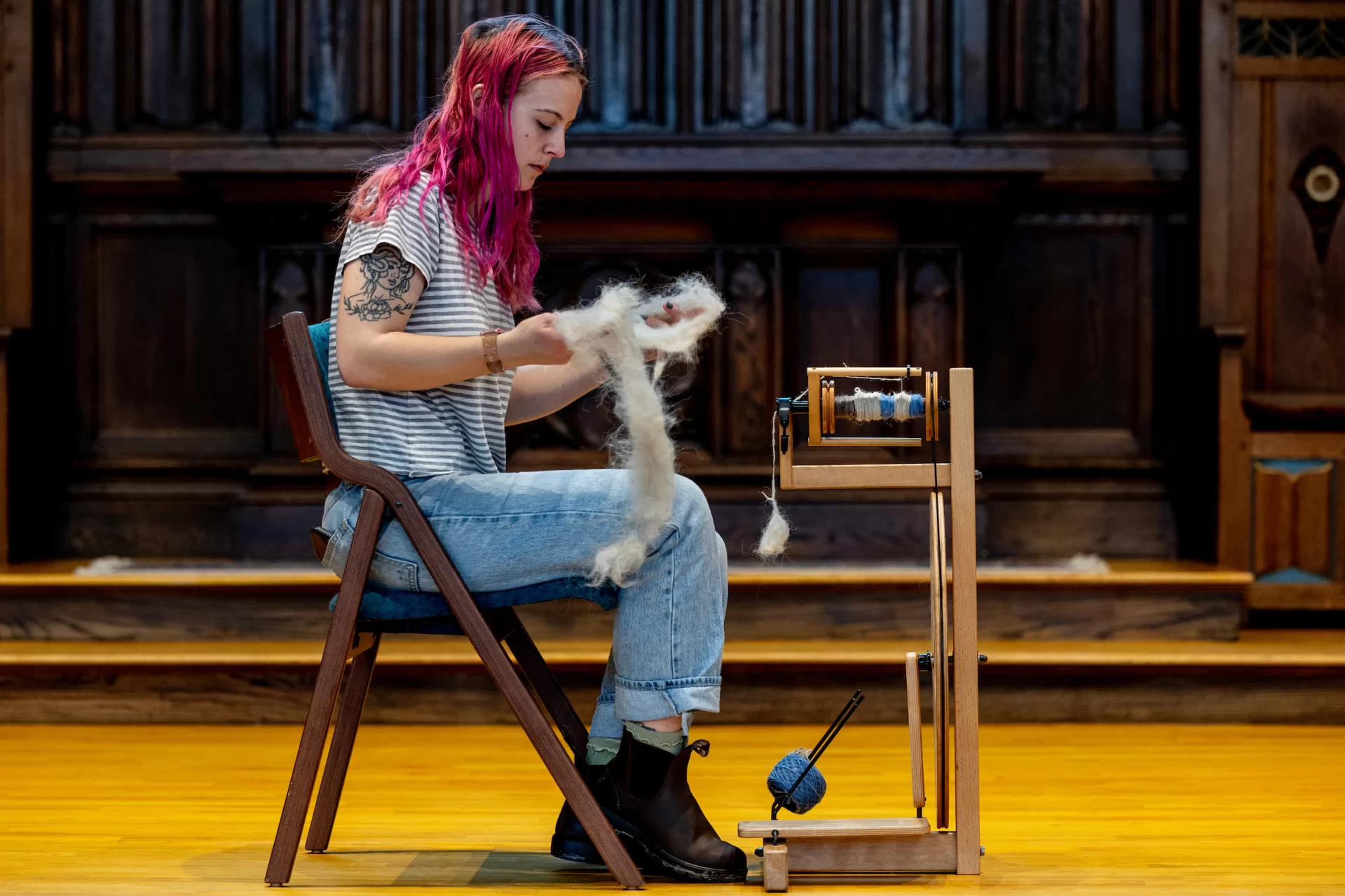
Sloan Phillips ’25 of Evergreen, Colo., also tackled an interdisciplinary studies major, focused on human rights, in addition to a major in biochemistry. They have recently begun work as a researcher at the University of San Francisco.
These scholars turned academic interests into academic passions; like architects imagining a new building or bridge, they assembled their majors from the ground up and submitted their proposed degree programs to the registrar’s office for approval.
Students often find camaraderie in their majors — the College Store offers nifty baseball caps with major logos — but students who embark on interdisciplinary majors are more like startup entrepreneurs.
“The hardest part is doing it alone,” says Quinn Berry ’25 of Middlebury, Vt., noting the need to be self-motivated while working closely with advisors.
As he created his IS major, Aydan Gedeon-Hope of Norton, Mass., sat down and looked at every course offered in the Bates Catalog. “It seemed nice being able to pick all your classes and not have to worry about requirements of different departments,” says Gedeon-Hope, who is a member of the Class of 2025 but will graduate next year after taking a year off. “Then, you start doing it, and you realize it’s a lot easier said than done.”
Still, he liked the autonomy and responsibility. “It’s very independent; no one’s telling you what you should and shouldn’t be taking.”
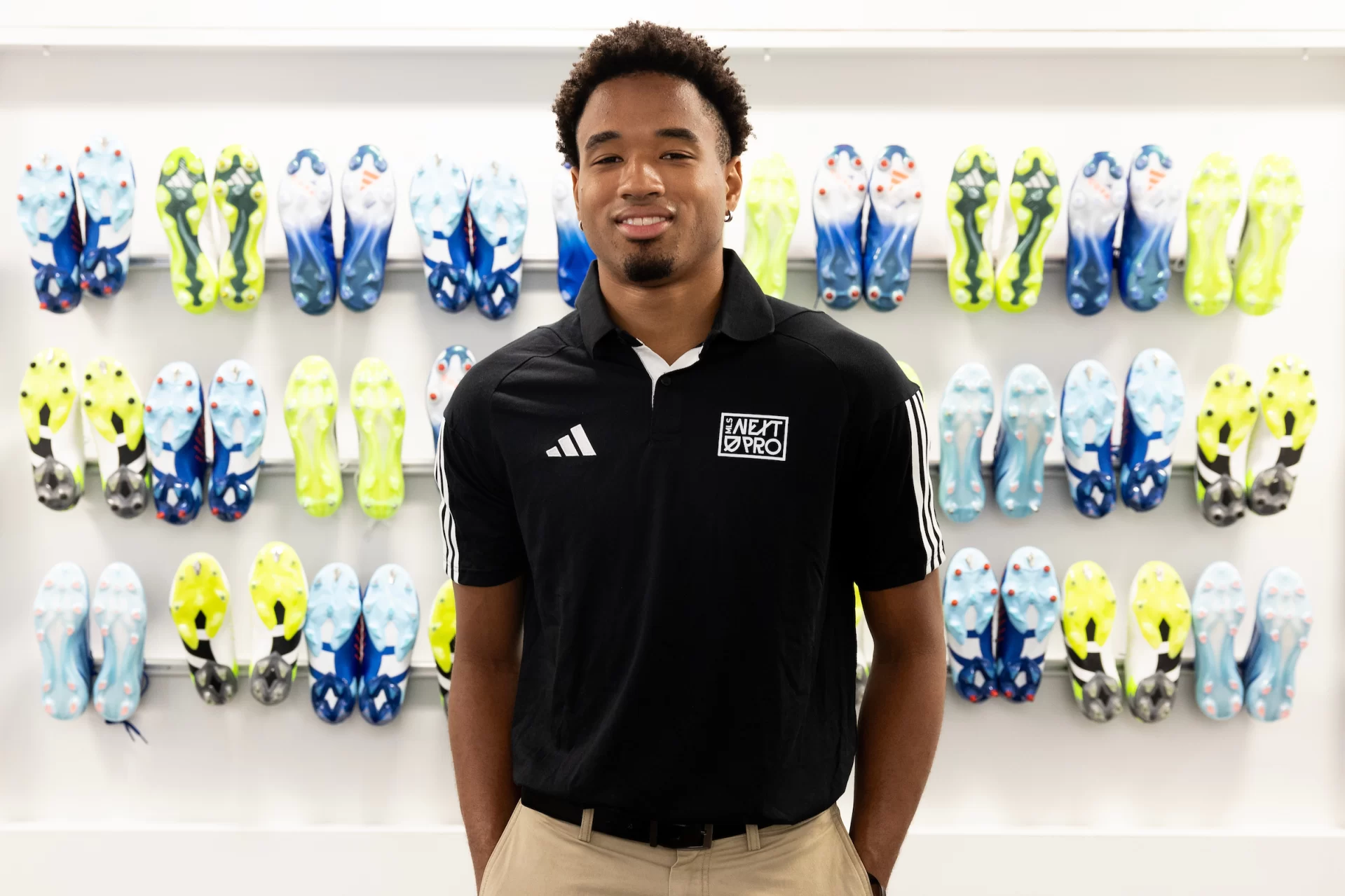
Gedeon-Hope is a “a very independent thinker and creative thinker,” he says. A two-sport athlete (basketball and outdoor track), he also dabbles in theater and co-hosts a WRBC radio show. His academic interests are similarly broad, including mathematics, management, and social sciences.
Gedeon-Hope’s IS major combines his interests in business and management in the social sciences with a concentration in sports. Last summer, he tested those interests in New York City as an intern with Major League Soccer NEXT Pro, learning the ins and outs of player relations and commercial operations, and seeing his intersecting interests come to life.
“I realized that the interdisciplinary major was definitely working in the sense of, I was getting more comfortable talking to people about conversations regarding players.”
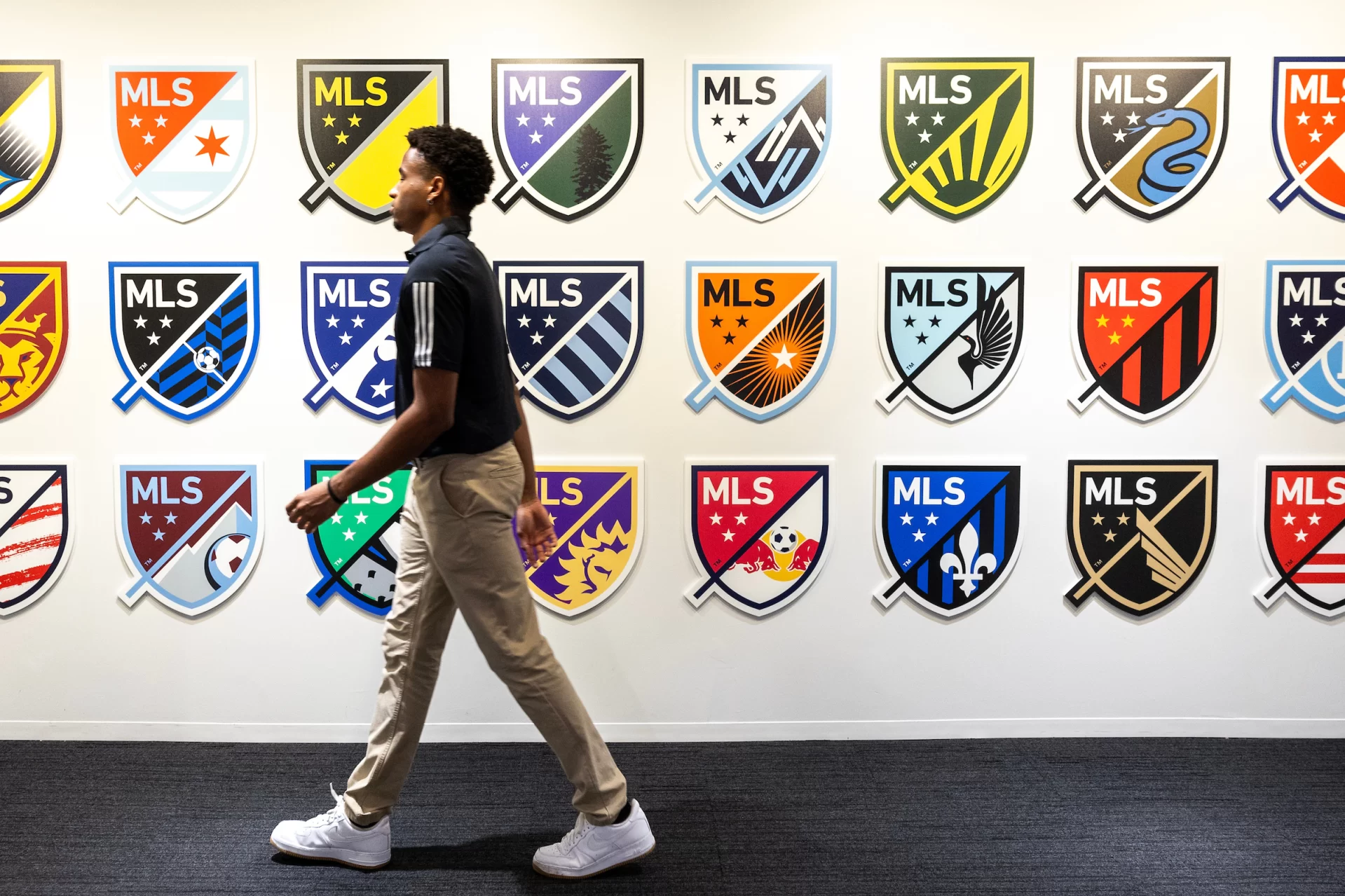
Nate Frank ’25 of Mahwah, N.J., fashioned an IS major in creative marketing, incorporating elements of marketing and graphic design. He bolstered that major with a minor in digital and computational studies and by studying both 2D and 3D design.
“I started thinking about what I wanted to get out of Bates and thinking about the classes that I wanted to take that would be able to help me most when looking for a job,” he says.
A member of the Bates varsity golf team while a student, Frank recently began a job at the U.S. Golf Association as a graphic designer.
Berry was interested in graphic design, as well as photography and videography; his interdisciplinary major in design and visual media features coursework in art and visual culture, anthropology, and rhetoric, film, and screen studies.
“I didn’t feel like I fit into one of those fully,” Berry says. “The option to draw from all three of those majors was definitely attractive.”
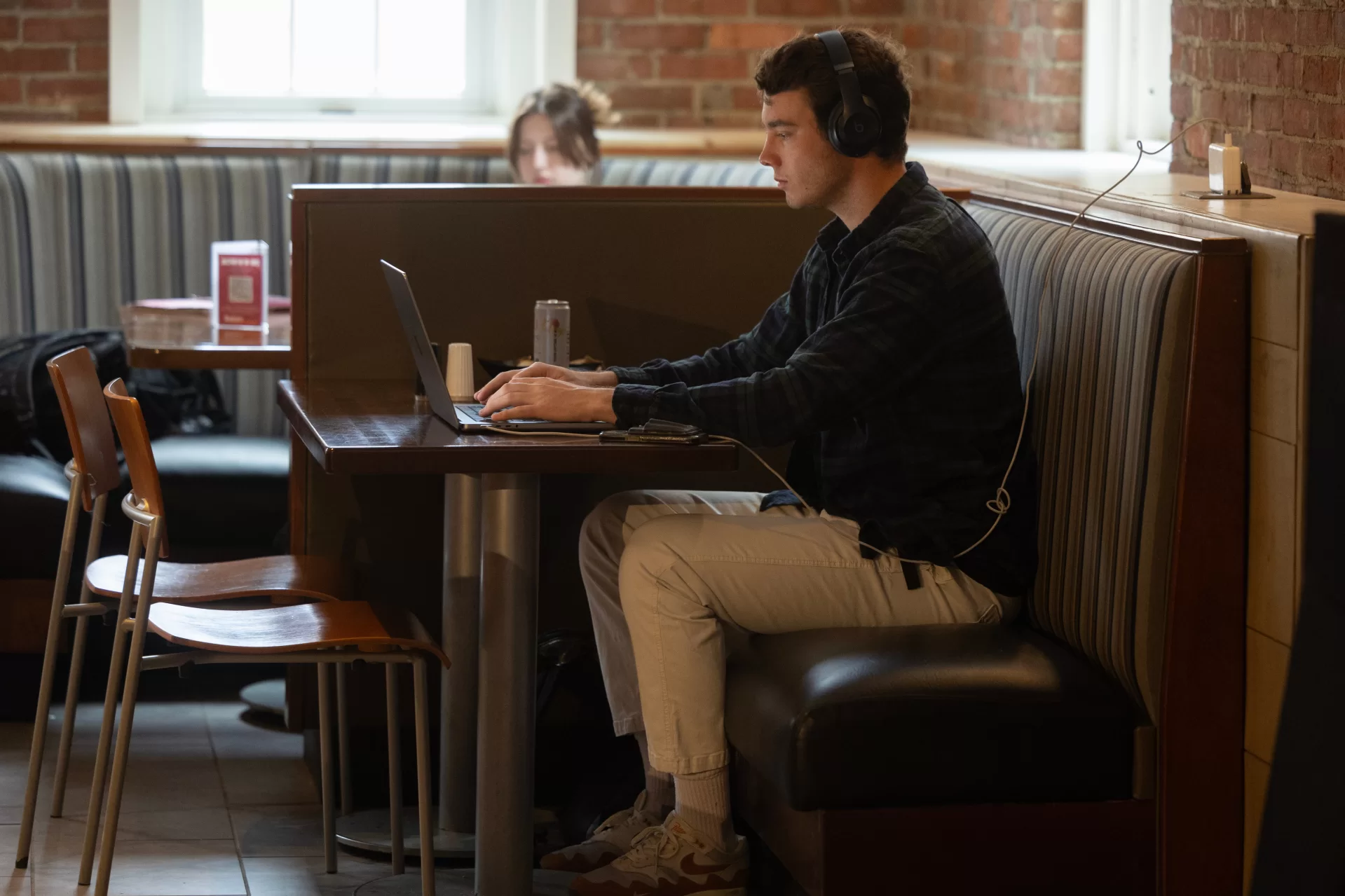
Interdisciplinary studies students design their curricula using a required application. They must list 15 proposed courses: two “methods courses” that teach research tools and approaches; four at the advanced, 300 level; and nine others. Of the 15, at least nine must be completed.
The form also requires the student’s rationale for pursuing this path over all the other 36 existing Bates majors, plus a brief thesis proposal — all due to the Office of the Registrar by March 1 of the sophomore year.
IS majors must also recruit a three-member faculty advisory board, including a thesis and major advisor. “That was hard,” Berry says. “It was first building a relationship with a professor enough to be able to ask that question because it is a pretty heavy undertaking” for a faculty member.
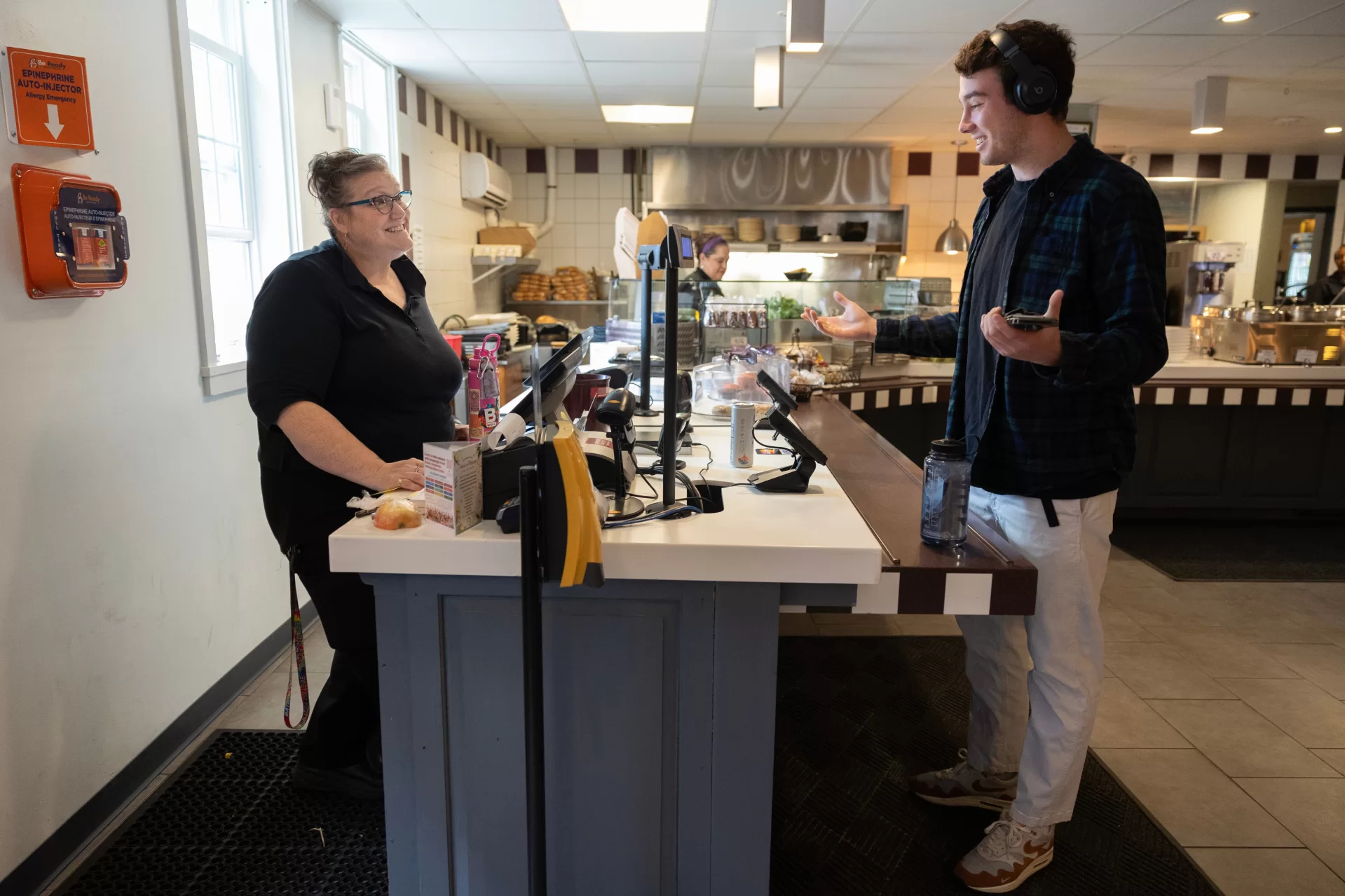
Growing up in Missoula, Mont., Maria McEvoy learned the value of “place-based” knowledge thanks to teachers from the nearby Blackfeet Nation and Confederated Salish and Kootenai Tribes. At Bates, she wanted to continue learning from Indigenous teachings and those whose expertise cannot be quantified through traditional academic measures.
“I really wanted to know more about the viewpoints and knowledge of people who aren’t traditionally accepted in academic fields,” McEvoy says.
Inspired by the content in Assistant Professor of Environmental Studies Jamie Haverkamp’s “Indigenous Ecologies” course and Associate Professor of History Joe Hall’s “Native American History” course, McEvoy pulled courses from the English, politics, anthropology, environmental studies, history, and classical and medieval studies departments.
She enjoyed the subsequent project of connecting her courses to her written rationale.
“I actually thought that part was really fun,” McEvoy says. “It felt like a puzzle.”
A strong justification is essential for an interdisciplinary studies application, as approval isn’t guaranteed. If the registrar sees overlap with an existing major, they may suggest that route or propose revisions before approval.
“You have to convince the board that there are enough classes that you can make a major out of the thing that you want to make a major out of, but there are not so many classes that you could do it through another major,” McEvoy says.
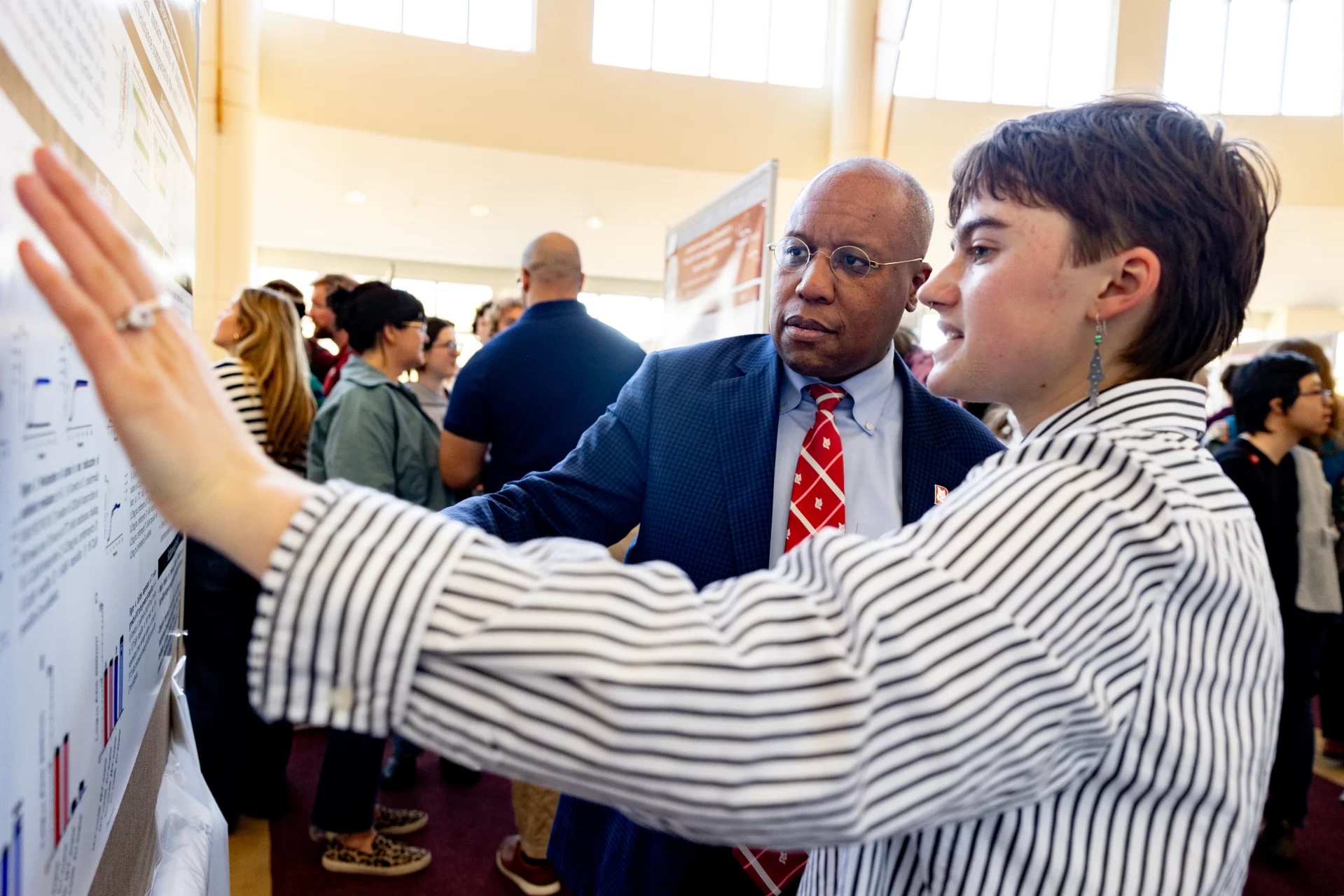
Even after applications are approved and curricula are set, students sometimes find that they cannot complete their proposed courses because of scheduling or availability. In this case, a student must request a change to their curriculum through a form to the registrar’s office.
“You don’t know what courses are going to be offered every semester,” Gedeon-Hope says. “That really changes your outlook on your major.”
Like other majors, IS majors find creative ways to apply their skills and interests to outside work and study experiences. McEvoy, for example, received an Otis Fellowship and spent months trekking alongside shepherds leading their sheep from Madrid to rural Spain. During the trip, she collected discarded wool that she later spun into yarn for an independent study course.
“One of the things that I love the most about Bates is that I’ve been able to do so many different things that don’t always seem, on paper, to speak to each other,” McEvoy says.
The Otis experience also inspired her honors thesis, in which she traced how pastoralism — rooted in Muslim shepherding traditions — became both an economic engine and a political metaphor in medieval and early modern Spain.
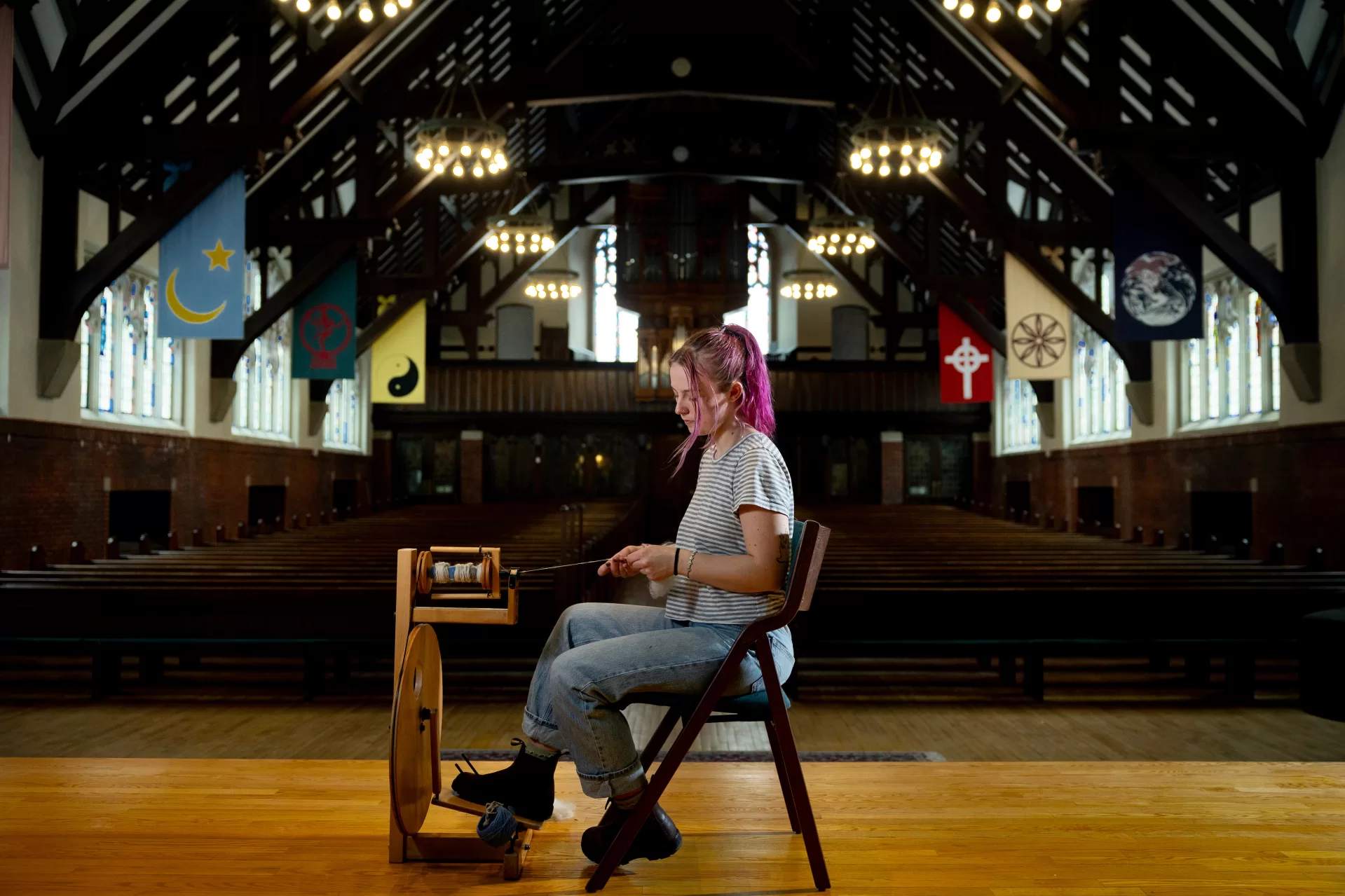
As the students near the end of their time at Bates, they’re looking ahead at how they will apply what they’ve learned to their next adventures.
“My long-term goal is the hope that I really find what I do love and am able to really make a career out of that,” Berry says.
For Phillips, what they learned through their IS major will remain close at hand as they begin their first post-Bates job, using their biochemistry skills to do research in thymus immunology.
“What I’ve learned through my interdisciplinary studies is that liberation and justice are everyday practices. Even as I go into science professionally, it’s just as important to carry forward liberatory values.”
